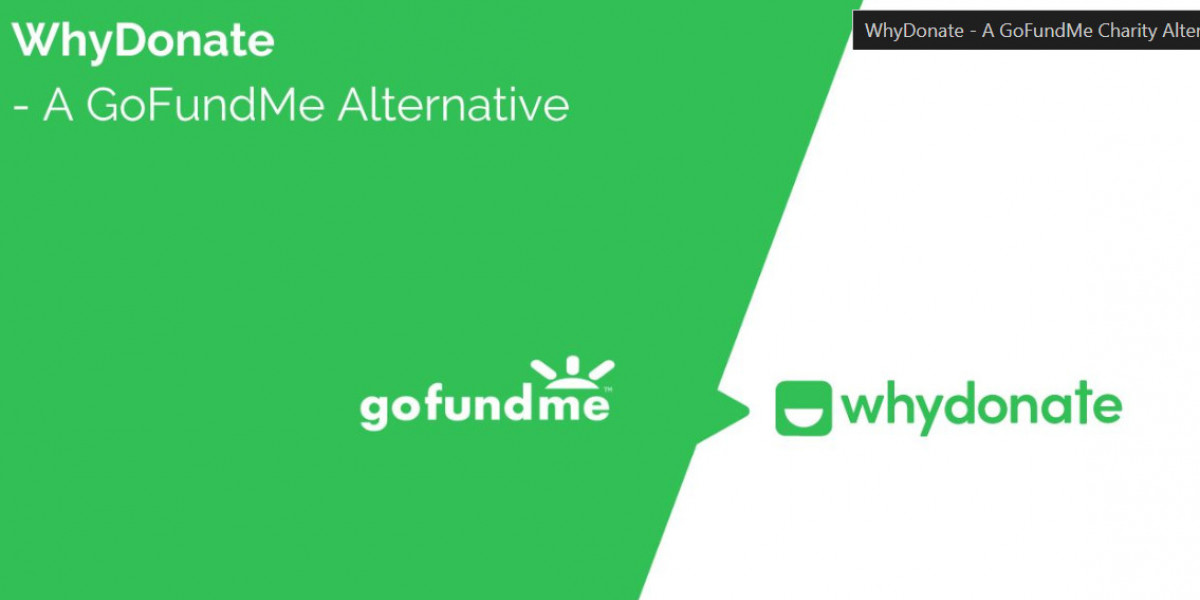Table of Contents
What Is Debt Crowdfunding?
Pros and Cons of Debt Crowdfunding
Debt Crowdfunding vs Donation-Based Crowdfunding
Why Opt For Donation Crowdfunding
Top Debt Crowdfunding Platforms In Europe and UK
WhyDonate – The Best Alternative For Debt Crowdfunding
Debt Crowdfunding Vs Donation Crowdfunding – Choose Wisely
Answering Popular Debt Crowdfunding-Related FAQs
What Is Debt Crowdfunding?
Debt crowdfunding, or debt-based crowdfunding, allows individuals to lend money to businesses or individuals in exchange for interest payments and the repayment of the principal amount. This method provides businesses access to capital without the need for traditional bank loans, making it an ideal option for businesses that may struggle to secure financing from banks. Through platforms dedicated to debt crowdfunding, businesses can raise funds from multiple investors, offering a flexible and efficient financing solution.
Debt crowdfunding is particularly beneficial for businesses looking to raise capital for specific purposes, such as crowdfunding for loan repayment or funding new projects. Investors earn interest on the funds they lend, and businesses repay the loan over a set term.
Pros and Cons of Debt Crowdfunding
Debt crowdfunding offers several advantages for both businesses and lenders, but it also comes with its own set of challenges.
Pros of Debt Crowdfunding for Businesses
Access to Funding Without Collateral: Unlike traditional loans, businesses do not need to pledge assets.
Lower Interest Rates: Debt crowdfunding often offers better rates than banks.
Flexible Terms: Businesses can negotiate loan terms and repayment schedules.
No Equity Dilution: Unlike equity crowdfunding, businesses don’t give up ownership or control.
Cons of Debt Crowdfunding for Businesses
Repayment Responsibility: Businesses must repay the principal plus interest, regardless of the financial situation.
Fees: Platforms may charge origination and servicing fees, reducing the net amount received.
Risk of Default: Failing to repay the loan can damage the business’s reputation and creditworthiness.
Pros of Debt Crowdfunding for Lenders
Higher Returns: Investors can earn higher returns than traditional savings accounts or bonds.
Fractional Investment: Lenders can invest in small portions of loans to minimize risk.
Cons of Debt Crowdfunding for Lenders
Risk of Default: If the borrower defaults, the lender may lose part or all of the investment.
Market Volatility: Returns are not guaranteed, and the market can fluctuate.
Debt Crowdfunding vs Donation-Based Crowdfunding
The key difference between debt-based crowdfunding and donation-based crowdfunding lies in the expectations from contributors.
Debt Crowdfunding
In debt crowdfunding, investors lend money to businesses or individuals with the expectation of being repaid, typically with interest. This model is ideal for businesses seeking funding for loan repayment or other business-related needs.
Donation-Based Crowdfunding
Unlike debt crowdfunding, donation-based crowdfunding involves collecting donations without the expectation of repayment. Donors contribute to causes, projects, or individuals without expecting anything in return. This is often used for charitable, humanitarian, or personal causes.
Why Opt For Donation Crowdfunding?
While debt crowdfunding involves financial risk and repayment obligations, donation-based crowdfunding is risk-free for the donor and offers flexibility for the fundraiser. Here are some reasons why you might opt for donation-based crowdfunding:
No Risk to Donors: Donors are not promised anything in return, making the process risk-free.
Flexible Funding: You can receive funds even if the campaign does not reach its goal.
Transparency and Accountability: Fundraisers are often required to provide updates, building trust with donors.
Global Reach: Donation crowdfunding enables global participation, allowing anyone from anywhere to contribute.
Tax Deductibility: In some cases, donations are tax-deductible, especially if made to nonprofit organizations.
Top Debt Crowdfunding Platforms In Europe and UK
If you're considering debt crowdfunding for your business, several reputable platforms in Europe and the UK are worth exploring:
1. Funding Circle
Funding Circle is one of the leading debt crowdfunding platforms, offering business loans ranging from $25,000 to $500,000. Their interest rates vary between 4% and 26%.
2. Zencap
Zencap provides secured and unsecured loans for small and medium-sized businesses in Germany and the Netherlands, with loan amounts from €100,000 to €5 million.
3. October
October offers business loans ranging from €30,000 to €5 million for companies in France, Spain, Italy, and the Netherlands, with interest rates of 4% to 10%.
4. ThinCats
ThinCats is a UK-based peer-to-peer lending platform offering loans from £50,000 to £5 million. Investors can bid on business loan listings, and businesses can access funds with flexible terms.
WhyDonate – The Best Alternative For Debt Crowdfunding
For those seeking a risk-free crowdfunding alternative, WhyDonate is a top choice. While not a debt crowdfunding platform, WhyDonate offers a secure and transparent donation-based crowdfunding experience, providing businesses, charities, and individuals with a flexible platform to raise funds.
Key Features of WhyDonate:
0% Platform Fees
Minimal Transaction Costs
Secure Payments
Peer-to-Peer Fundraising Options
Custom Branding and Donation Forms
Tax Donation Receipts
Global Reach
Great Customer Support
Access to a Donor Database of 350,000+
Debt Crowdfunding Vs Donation Crowdfunding – Choose Wisely
When deciding between debt crowdfunding and donation-based crowdfunding, consider your funding needs and the potential risks. Debt crowdfunding offers businesses access to capital with the obligation of repayment, while donation-based crowdfunding provides a more flexible, risk-free option for contributors.
Answering Popular Debt Crowdfunding-Related FAQs
Q. What is an example of debt-based crowdfunding?
An example of debt crowdfunding is when individuals lend money to businesses through platforms like Funding Circle, expecting to be repaid with interest.
Q. How does debt crowdfunding differ from equity crowdfunding?
Unlike equity crowdfunding, where investors receive shares in the business, debt crowdfunding involves loans that must be repaid with interest.
How To Write An Appeal Letter For Fundraising – Fundraising Appeal Examples & Tips
What Is A Fundraising Appeal Letter?
A fundraising appeal letter is a formal request for financial support for a specific cause, campaign, or organization. It serves as a direct communication between the fundraiser and potential donors, explaining the purpose, urgency, and impact of contributions. A well-crafted appeal for funds can significantly enhance donor engagement and fundraising success.
How To Write An Appeal Letter For Fundraising?
Writing a compelling fundraising appeal letter requires clarity, emotion, and persuasion. Here are key steps to ensure your appeal letter resonates with potential donors:
1. Define The Purpose Of Your Fundraising Appeal
Clearly state why you need funds and how the donations will be used. Be specific about the impact each contribution will have on the cause.
2. Keep It Simple And Concise
Avoid complex language. Use clear and direct wording to ensure that all readers understand your message.
3. Know Your Audience
Tailor your letter to the interests and values of your target donors. Understanding your audience helps create a more effective and relatable appeal.
4. Create A Sense Of Urgency
Highlight time-sensitive needs or challenges to encourage immediate action. Mention deadlines or pressing issues that require urgent support.
5. Share A Powerful Story
A personal story about the people or cause you are supporting makes your fundraising appeal more engaging. Real-life examples evoke empathy and motivate donations.
6. Don’t Ask For Money Right Away
Introduce your cause before making a donation request. Build an emotional connection before discussing financial contributions.
7. Focus On The Cause, Not Yourself
Your letter should emphasize the impact of the donation, not personal achievements. Keep the focus on the cause and those who will benefit from the funds.
8. Use Visuals To Strengthen Your Appeal
Including images or videos of the cause can increase engagement and trust. If sending a digital letter, provide a link to a campaign page with compelling visuals.
9. Set A Realistic Fundraising Goal
Be transparent about your financial needs and break down how the money will be spent. A clear goal helps donors understand their role in reaching the target.
10. Express Gratitude
Always thank your donors, whether they contribute or not. A simple “thank you” reinforces goodwill and encourages future support.
Fundraising Appeal Examples
Here’s a sample fundraising appeal letter that you can use as a template:
[Your Organization’s Name]
Subject: [Urgent Cause That Needs Support]
Dear [Donor’s Name],
I hope this letter finds you well. Your support has been invaluable to us in the past, and today, we need your help more than ever.
We are currently working on [mention the cause], which has already helped [mention beneficiaries or impact of previous work]. However, we still need [specific amount] to ensure we can continue making a difference.
Your contribution, no matter the amount, can help us provide [mention what the donation will be used for]. We invite you to join us in this mission and make a direct impact.
Please consider making a donation today. Every small effort counts!
Thank you for your kindness and generosity.
Best regards,
[Your Name]
[Your Organization]
[Donate Button] / [QR Code for Donation]
How To Write A Fundraising Appeal Email?
To create an engaging fundraising appeal email, follow these steps:
Catchy Subject Line: Grab attention immediately (e.g., “Urgent: Help Save Lives Today!”).
Engaging Opening: Start with a relatable story or impactful statistic.
Explain The Cause: Clearly define why you need support.
Create Urgency: Encourage immediate action by setting deadlines.
Include A Call To Action: Provide a clear donation link or instructions.
Express Gratitude: End with appreciation for their support.
Start Your Fundraising Appeal Today!
Writing an effective appeal for funds requires emotion, clarity, and a strong call to action. Platforms like WhyDonate simplify the fundraising process by providing a secure and user-friendly space to create campaigns.
What are you waiting for? Start your fundraising appeal today!








